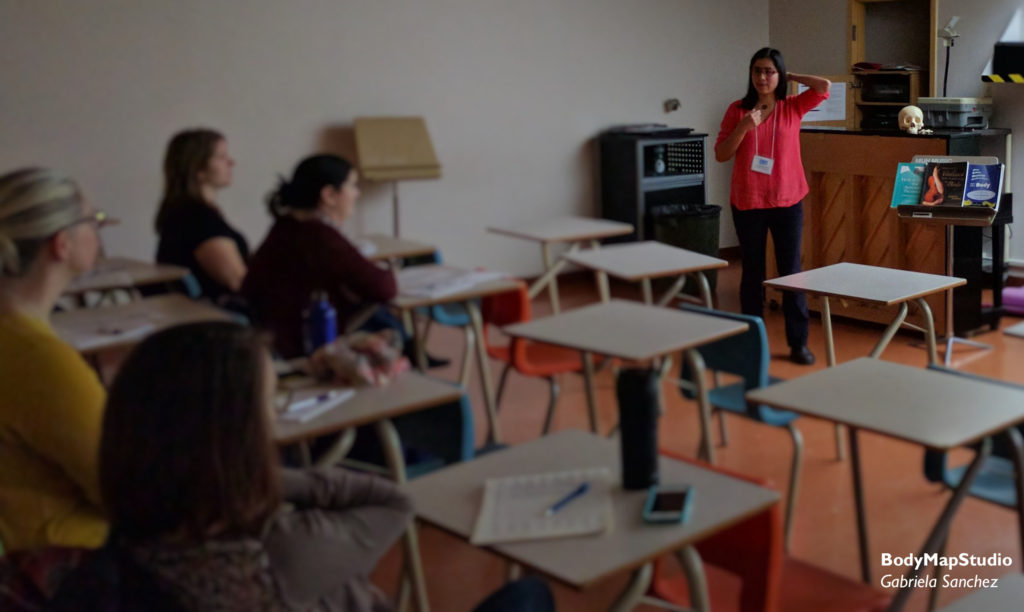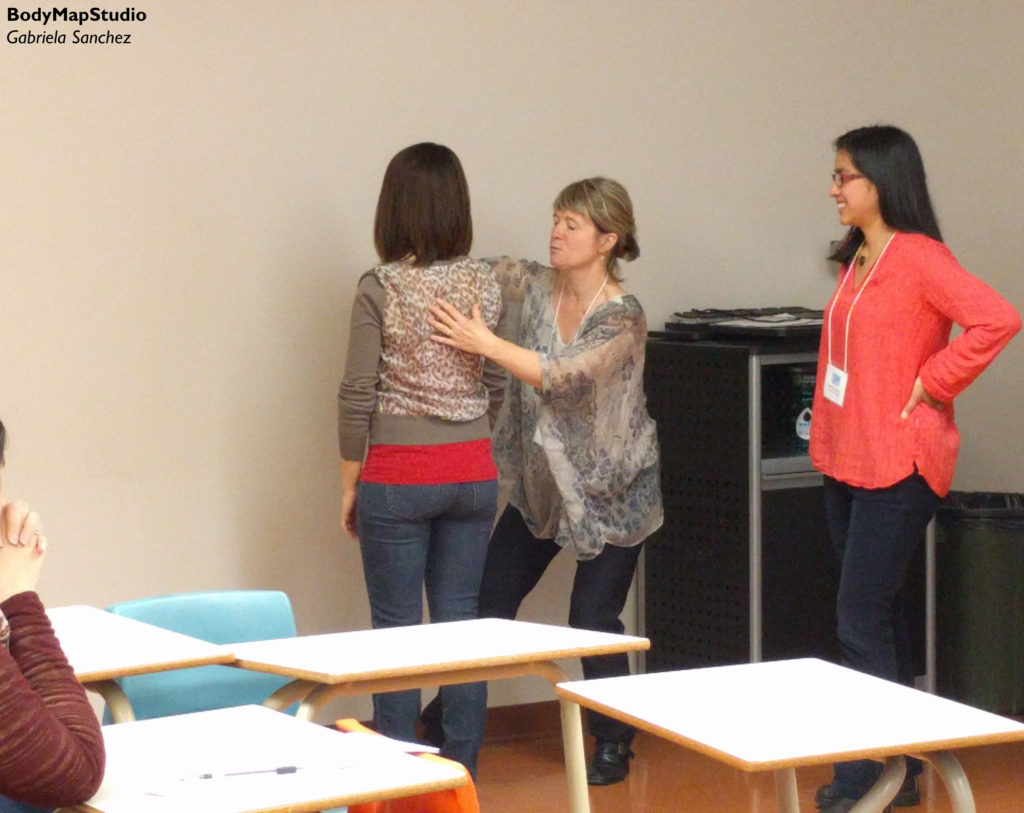On October 15th Jennifer Johnson and I presented in the music educators conference Resonate 2016-NLTA.
Our presentation focused on recognizing some of the cultural myths and postures that produce pain and tension in the body. We talked about how these patterns interfere with the natural design of our bodies and explained accurate information about the body. We also shared some of the tools that we can use to help our students to develop a balanced body while learning to play an instrument.
Some of the topics discussed were neck, shoulder, and lower back pain; as well as tendonitis in the arm and carpal tunnel syndrome.
Lots of information in one hour!

The books that you see in the images are:
- Conable, B. (2000). What every musician needs to know about the body: The practical application of body mapping to making music. Portland, Oregon: Andover Press.
- Conable, B. & Conable, W. (1995). How to learn the alexander technique: A manual for students. Portland, Oregon: Andover Press.
- Johnson, J. (2009). What every violinist needs to know about the body. Chicago, IL: GIA Publications.
However, there are much more resources for learning Body Mapping.

Thanks to everyone who attended this presentation. We all keep learning and enjoying new ways to think about music education and performance!
The next video is a small scientific explanation about the body map. Something that was not filmed in the video and that is very important is that the body map can change! So we can learn new ways to move and avoid injuries. [Here’s another blog post for understanding the body map].
Sorry, but the audio quality is not the best.
https://www.youtube.com/watch?v=TIZMPxtsa4w
In the following video we talked about how to find balance while sitting and avoiding pain in the lower back. It is very important to understand that when we are in balance the weight is delivered through the front part of the spine. In this way the muscles and other structures will not suffer from tension or pressure.
Understanding the structure, function, and size of the spine, pelvis and sitting bones is the beginning to developing balance while sitting.
https://www.youtube.com/watch?v=6ADwpDaoKS4
